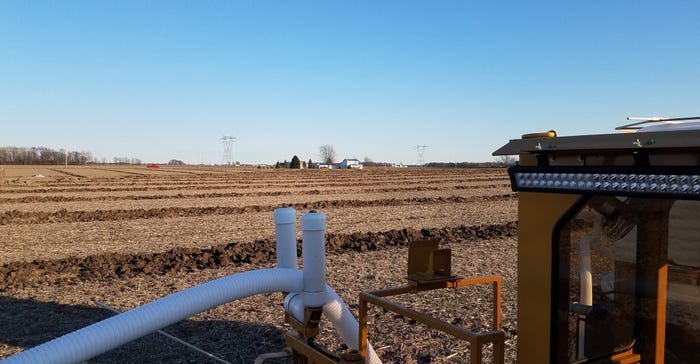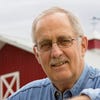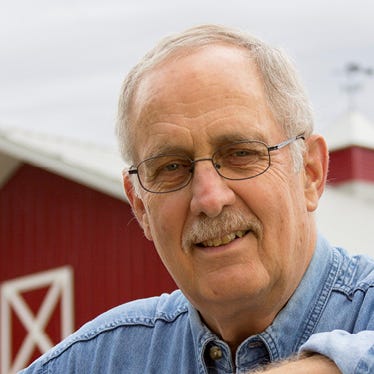March 17, 2021

I love being an ag writer. I’m blessed to have the opportunity to blend two passions — working with great people and writing about all things agricultural.
Over the years I�’ve learned that there’s also a nifty side benefit. After I do an article, I can sometimes take what I’ve learned and drag it home to use on my own small Wabash/Miami County farm! In this case, it was improving my farm through pattern drainage.
My inspirations were many. From Purdue University agronomist Eileen Kladivko, I learned about the benefits of pattern drainage on heavy, wet soils like Blount and Pewamo. From multiple Purdue Farm Management Tours, I learned how top-tier farmers see drainage as one of the first places to invest their dollars.
From conservation guru Jamie Scott, Pierceton, I learned how drainage could take no-till and cover crops to the next level. And from observing a tile plow demonstration at the 2015 Farm Progress Show, I learned how quickly and effectively laterals can be installed, with minimal topsoil disturbance.
Perhaps the most impactful influence came from former Natural Resources Conservation Service state agronomist Barry Fisher. I was covering an event and he made the statement, “Additional land’s hard to come by. If you can’t expand your operation horizontally, why don’t you expand it vertically using no-till, cover crops, and pattern drainage to increase your productivity?” That resonated with me.
Also, from doing many articles on climate change, experts confirmed what many farmers are observing, that “something’s changing.” Whatever the cause, those in the know say it’s likely to get worse, with wetter springs and more extreme weather events becoming more frequent. Successful farms of the future will need to be able to plant and harvest in a timely manner, reduce soil compaction and become more resilient.
From learning to action
After years of hearing about the benefits of pattern drainage and just now getting around to it, you might conclude — with some justification —that “This guy’s a slow learner.” But another thing I learned is that even though I may be excited about “the next big thing,” farmers don’t farm in a silo. It sometimes takes time to bring others along and put all the pieces together.
Like skeptical spouses, who must be persuaded of the value of “burying that money in the ground” vs. taking the grandkids to Disney World. Or biding our time through multiple years of thin or non-existent profit margins. Or working with my brother-in-law, who owns the adjoining farm through which the mains would be installed. Or working with adjoining neighbors who have greater or lesser enthusiasm for participating.
Then there was the question of working with my cousin/tenant about how to share the cost of installing pattern drainage within the framework of a share lease. For this, I first sought help from former Purdue Extension economist Chris Hurt, who referred me to Michael Langemeier. He sent material from Iowa State University that proved quite helpful. My cousin and I worked out a multi-year lease that turned doing pattern drainage into a win for both of us.
Dream becomes reality
After years of learning, thinking, planning, jumping through hoops and coordinating with others, after harvest last fall, we finally got it done. All of us who were involved quickly settled on Keith Miller Excavating of Kokomo, which has a reputation for quality work, as the contractor.
For the plan, we settled on 60-foot, 4-inch laterals, which Miller said would be adequate to effectively drain our soil types. And with the expectation that the effects of climate change are likely to become more pronounced, we upgraded our system from the standard ⅜-inch coefficient to ½-inch. In other words, we increased by a third the ability of the system to remove excess rainfall by upsizing our mains.
I was a frequent visitor to observe the various stages of the process. It was just plain fun to see a system that I’d learned about through the course of my day job finally take the next “giant leap” and come to fruition. This was land that my family has farmed — initially with horses — since the Great Depression. I wondered what Dad and Grandpa would have thought. I’m sure they would be very interested, and I think they’d be pleased.
Most of all, it was fun applying what I’d learned, from work and people I love working with. I really am blessed.
Boone writes from Wabash.
About the Author(s)
You May Also Like






